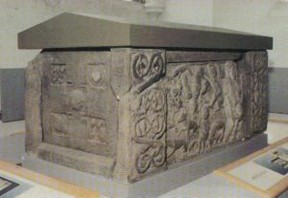 How do we know that it never happened? Well, absolutely no verifiable fact in the story stands up to close scrutiny.
How do we know that it never happened? Well, absolutely no verifiable fact in the story stands up to close scrutiny.
St Columba and his fellow Irish monks had already brought Christianity to Scotland, two centuries before this battle occurred. A century after that, the Synod of Whitby had seen the Roman Catholic Church traditions win out over the homegrown Celtic Christianity.
The cult of St Columba, which was huge at the time, had to be quickly eroded. It was suggested then that St Andrew was a more appropriate saint to patronize the Scots.
In 738, twelve years before the alleged battle, Acca, Bishop of Hexham, in Northumbria, had to flee his See. He arrived in Scottish Cennrígmonaid and found refuge there. He had brought with him bone relics, which were purported to have been St Andrew's.
It boosted religious pilgrimages to the Abbey of Cennrígmonaid greatly. So much so that the area was already being called St Andrews by the time Óengus and Athelstan clashed at the site.
And about that battle. There's no record of any Athelstan in Northumbria during that period, let alone one invading Scotland. And Óengus II didn't take the throne until 820, only seventy years after he was supposed to have been taking his people into war.
Apart from that, it's all true. Every word.
However, let's be fair. We haven't looked at Óengus I yet, and he was ruling at the right time. Moreover, he was embroiled with wars against the Northumbrians. But there's still no Athelstan and the St Andrews Sacrophagus (pictured above) was already in the Abbey by 747.
In short, there's a lot of mixing of half-truths and legends; but it was true when it needed to be.
That was when Robert the Bruce delivered the Declaration of Arbroath in 1320. The long association of St Andrew with Scotland was used, in a bid to convince the Pope to recognize Scottish independence.
It was around this time when writers, in Scotland and in France, created the story in the form that I recounted above. It helped consolidate the case and cement the foundation tale that's still told today.
Though, as patron saint and early king respectively, I think that St Andrew and Óengus II would have been happy to oblige!



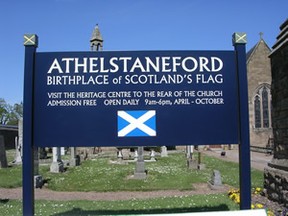 The battle was not going well. Óengus mac Fergusa, King of the Picts, had given it his all, but his men were being out-classed and slaughtered at every turn. It was going to end badly.
The battle was not going well. Óengus mac Fergusa, King of the Picts, had given it his all, but his men were being out-classed and slaughtered at every turn. It was going to end badly.



 How do we know that it never happened? Well, absolutely no verifiable fact in the story stands up to close scrutiny.
How do we know that it never happened? Well, absolutely no verifiable fact in the story stands up to close scrutiny.


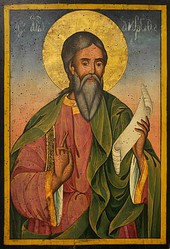

 St Tydecho's Churches in West Waleson 09/03/2014
St Tydecho's Churches in West Waleson 09/03/2014
 Goodies for an Outlander Premiere Partyon 03/06/2015
Goodies for an Outlander Premiere Partyon 03/06/2015
 Holocaust Memorial Day Interview with Rainer Höss, Grandson of Rudolf Architect of Auschwitzon 01/24/2015
Holocaust Memorial Day Interview with Rainer Höss, Grandson of Rudolf Architect of Auschwitzon 01/24/2015
 Romantic Valentine Gifts for an Outlander Fanon 01/16/2015
Romantic Valentine Gifts for an Outlander Fanon 01/16/2015

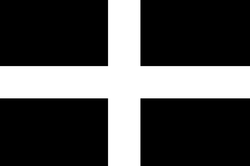
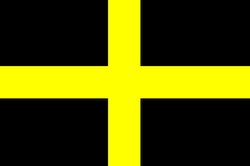
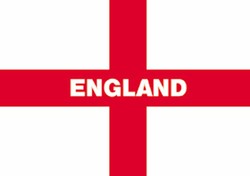
Comments
It's more than just not including Wales. Here's an article that I prepared earlier: http://wizzley.com/england-imperalism... :D
I don't think that such things ever really went away, but they aren't openly discussed and publicized anymore. That shift happened with Martin Luther and spread with Protestantism.
You know, the other day I was just reading about how the UK flag represents all the different flags, except Wales, I didn't know that before then. So, I thought it'd be neat to learn more about them individually, and look what just happened to be waiting here today! :D
I feel like you don't hear stories like this anymore- like leaders or generals or armies themselves receiving omens, good or bad right before a battle. At least not like this one. I wonder when that shift really happened.
Ragtimelil - I'm really glad to hear it! I intend to write many more, so it's good to know that someone appreciates them.
Sam - Oh! Thanks! I'll nip and read that in a bit. I know a fair bit already about that particular emperor (he had a Welsh mother!), but not this story. Thanks for the head's up.
Mira - There are so many embellishments, starting right back in the 8th and 12th centuries, as the Abbey drew pilgrims with the relics. But that isn't to say that there is no kernel of truth in the tale. It's a great one to tell!
Fascinating. I love your history lessons!
Oh, and one idea, look up the legend about the conversation of Emperor Constantine, there are some striking similarities in the story: http://en.wikipedia.org/wiki/Constant...
I loved that story with the dream and Andrew's cross in the clouds!! :D
:)
You are welcome ;-)